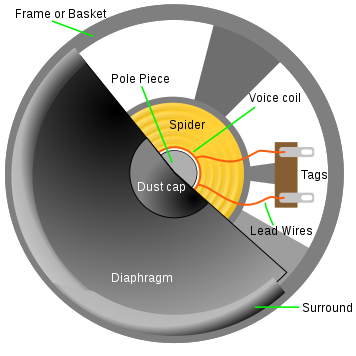How Speakers Work
Speakers are the most important component of the whole recording and reproduction process. No matter how high end the rest of the components are, if they're hooked up to poor speakers, the sound quality will drop quite notably.
A system's speaker is the component that takes the electronic signal and turns it back into actual sound we that we can hear.
We hear different sounds from different vibrating sources because variations in the following occur:
-
Sound-wave frequency: A higher wave frequency means that the air pressure fluctuates faster. This results in a higher pitch.
-
Air-pressure level: This is the wave's amplitude, which determines how loud the loud is.
A microphone works the same way as our ears. It has a diaphragm which vibrates with the sound waves.
In the speaker, a driver produces sound waves by rapidly vibrating a flexible cone, or diaphragm.
- The cone, usually made of paper, plastic or metal, is attached on the wide end to the suspension.
- The suspension, or surround, is a rim of flexible material that allows the cone to move, and is attached to the driver's metal frame, called the basket.
-
The narrow end of the cone is connected to the voice coil.
-
The coil is attached to the basket by the spider, a ring of flexible material. The spider holds the coil in position, but allows it to move freely back and forth.
Essentially, the amplifier is constantly fluctuating between a positive and negative charge. Since electrons always flow in the same direction between positively and negatively charged particles, the current going through the speaker moves one way and then reverses and goes the other way. This alternating current causes the polar orientation of the electromagnet to reverse itself many times a second.
The electromagnet is positioned in a constant magnetic field created by a permanent magnet. These two magnets -- the electromagnet and the permanent magnet -- interact with each other as any two magnets do. The positive end of the electromagnet is attracted to the negative pole of the permanent magnetic field, and the negative pole of the electromagnet is repelled by the permanent magnet's negative pole. When the electromagnet's polar orientation switches, so does the direction of repulsion and attraction. In this way, the alternating current constantly reverses the magnetic forces between the voice coil and the permanent magnet. This pushes the coil back and forth rapidly, like a piston.

